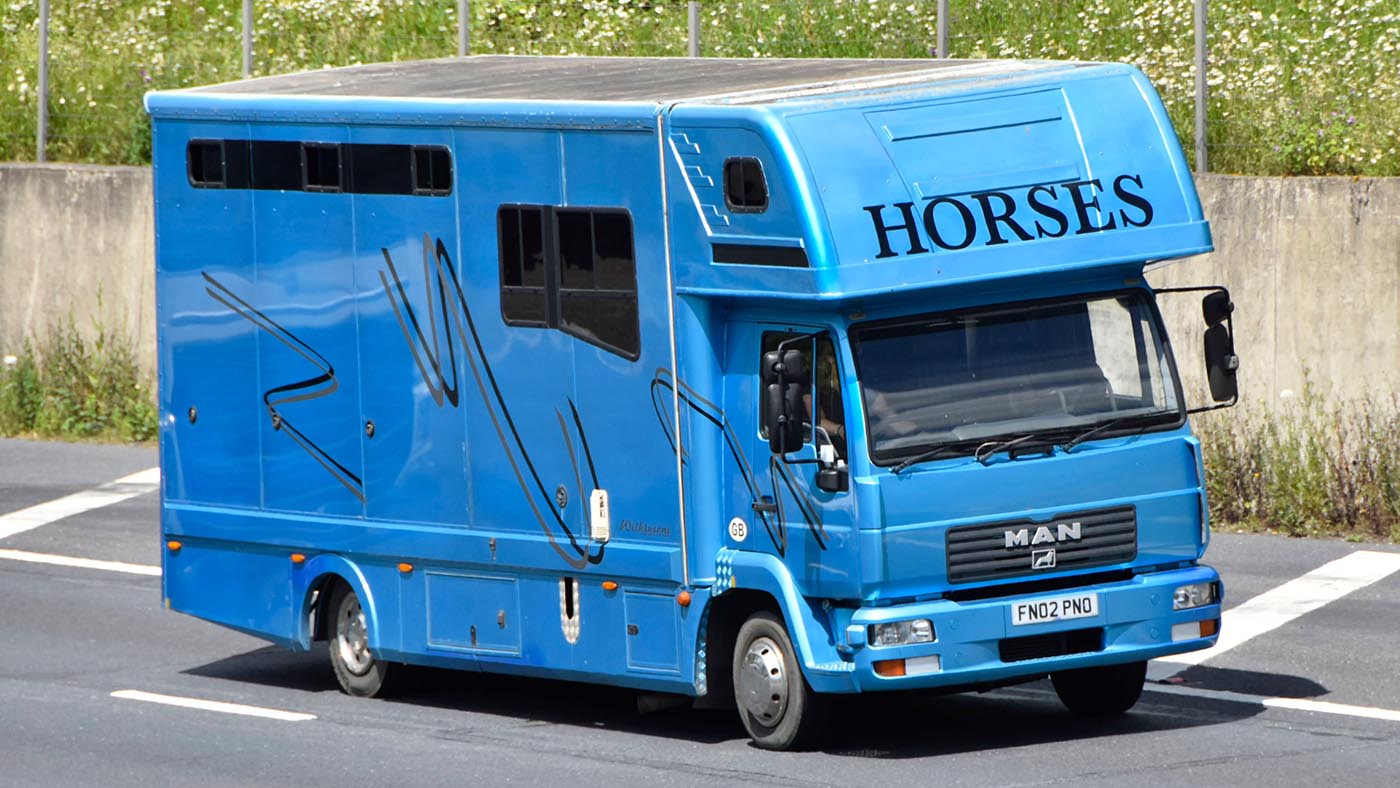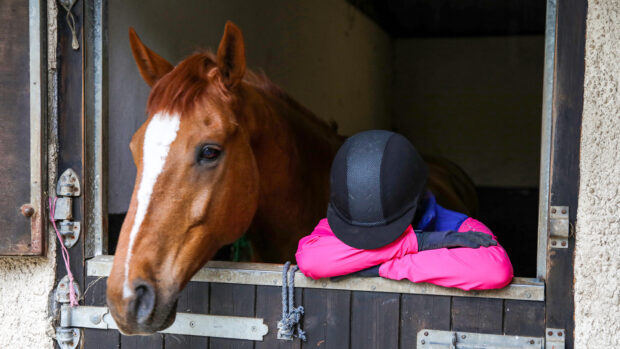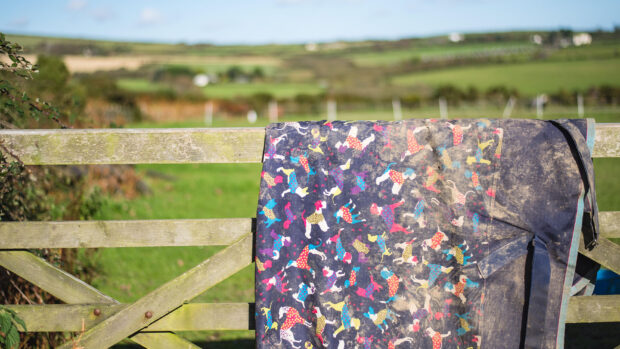Most horse owners at some stage will consider whether they want to invest in a horsebox or trailer. You can get by without your own transport, but whether it’s competing, hunting, fun rides or even taking the horse to the vet, at some stage it feels more practical to have your own set of wheels rather than begging lifts or hiring transport on demand.
A trailer is towed behind your car. As such, you need to have a sufficiently powerful and heavy car to match up to the trailer’s weight with a horse. Horses typically travel facing forwards in trailers, but some of the larger models now offer herringbone or rear-facing stalls, giving more options to keep horses comfortable while on the road.
Trailers tends to be more popular with those who compete less often and therefore don’t want a horsebox taking up half the drive when it’s not in use so frequently. And if you’ve only one horse to transport, you may not need require as much space as lorry offers.
A horsebox is a lorry designed – or converted – specifically to travel horses. There are rear-facing, forward-facing and herringbone options. Like trailers, there is a big range in size from two-horse 3.5t horseboxes with minimal living area, to vast 10-horse trucks with room for a small family to camp in style. Horseboxes – also known as lorries — tend to be the preferred option for professional riders. They typically look smarter, take a string of horses, and have space to entertain owners in the living area.
Trailers: the pros
- Trailers are cheaper than lorries on several levels. Their price-tag is lower as an initial investment, and their running costs are lower, because there is less to maintain, ie no engine, no MOT/plating, nor road tax
- Fuel: even a diesel 4×4 car towing a load is cheaper to refuel than a horsebox
- Since December 2021, the rule has been scrapped that prohibited drivers who passed their test after 1 January 1997 from driving a trailer without an additional trailer test. This cuts out the need for additional fees and time-consuming qualifications. However, driving a trailer isn’t completely straightforward so it’s advisable to undergo training before transporting horses
- You can park, unhitch and drive away unencumbered when you don’t need the trailer, for instance when you are stabling your horse at a show and want to nip out to buy food
- Your trailer will usually have basic cover as part of your car insurance policy. However, it is advisable to have dedicated horse trailer insurance, as well as specialist breakdown to cover recovery of your horses
Cons
- You need an appropriate car. This is only really a con if you have to upgrade your current vehicle. However, just because a car has a towbar does not mean it’s fit, or legal, to pull a trailer. Be aware, too, that straining the car will reduce its working life. The total weight of what you are towing (the trailer, plus the weight of everything on board) must not weigh more than the car’s maximum towing capacity (MTC), which can be found in your car’s handbook
- Most trailers have stalls for only two horses, and the larger ones that have three or even four berths need a very powerful car to tow them safely
- Most trailers are not designed for overnight stays, although some people are prepared to camp in the horse area if the need arises. The few that do have separate living or tack areas, tend to need a larger towing vehicle
- Many drivers find them harder to drive and manoeuvre, especially reversing down a narrow country lane, but it is vital that you are confident and skilled at driving with a trailer before putting horses on board

Initial investment and running costs of a trailer are lower than a horsebox, but some drivers find them difficult to manoeuvre
Horsebox or trailer: ‘Running costs are next to nothing’
Kirsty Morton switched from a 7.5t lorry to a 3.9t in 2020, but when her new horse didn’t travel in the smaller (rear-facing) lorry, she switched to a trailer and Jeep, in which he travels “perfectly”.
“At first I hated the trailer; I felt like I had dropped down in the world as I absolutely loved the lorry,” says Kirsty, who competes in British Showjumping. “But a good six months in, I wouldn’t change it – there are so many pros.”
Kirsty lists running costs and cheaper fuel as key advantages: “The days of £1,000-plus per year running costs are gone. And I now have a nice Jeep for running about in, and the flexibility at a stay-away show to nip out for food.”
On the downside, she misses the space, both the living area and room to tack up.
“But with the rising costs of everything, I won’t be staying away as much, and if I were to stay away, I could get a nice B&B or Travelodge.”
Horseboxes: the pros
- Most people believe horses travel better in lorries. There tends to be more space and the suspension can be better in a lorry, affording a smoother ride and minimising the effects of bumpy roads
- You can drive a 3.5t horsebox on your car licence (B category) without additional qualifications
- The larger the horsebox, the more horses you can transport, though this is subject to the payload, so don’t assume just because you a two-berth lorry, you can legally take two large horses. But overall, you simply have more space, for the horses, kit and people
- Most lorries do have some living area, which gives the option of at least being able to shelter from the wind and rain and enjoy a cup of hot tea – or more formal hosting for riders with clients. The larger lorries have a sizeable, well-fitted room with plenty of space for a small family to camp during shows
- The majority of larger lorries have access directly through from the living area to the stalls. This means that you may not need to get out of the truck if you need to check on the horses during the journey or in an emergency
- Horseboxes are steadier in high winds
- They look smarter, and therefore besides having the space to carry a string, are the preferred choice for the professional rider
Cons
- Initial expense: horseboxes are typically much more expensive to purchase than trailers, as they are larger, with more facilities, have their own engine and are a vehicle in their own right
- Ongoing expense: the running costs of a horsebox are higher than a trailer, because it is effectively like having another vehicle on the road (and you’ll also need a car for everyday use). This means it needs an MOT/plating, insurance, servicing and general maintenance/repairs
- Unless you passed your regular driving test before January 1997, for a horsebox between 3.5t and 7.5t you need a C1 licence and to take a DVSA test. Above 7.5t, all drivers need the category C lorry licence for up to 32t. This takes time: you need a medical from the doctor, a two-part theory test and then HGV training, which can cost up to £3,000
- You need to be really careful not to go overweight in a horsebox – especially if you are transporting more than one horse/pony in a 3.5T, but also many 7.5T lorries partitioned for three horses do not have sufficient payload to carry three along with all their associated kit. Take the lorry to the weighbridge to check you are within the limits
- If you’re at a show and want to nip out to shops, your only vehicle is a horsebox, which is both unwieldy on country lanes and in car parks, as well as expensive on fuel
- A trailer pulled by a strong 4×4 is easier to extract from a muddy field than a horsebox which has to wait its turn for the tractor tow

Horsebox or trailer: ‘far less stressful in the lorry’
Liz Roberts switched from a trailer to a 7.5t lorry. She has a 17hh Irish Sport Horse competing at medium and a semi-retired advanced medium 16.3hh gelding who works as a voluntary police horse, plus a rescue pony who acts as a travelling companion.
“Having two big horses we’ve found it is far less stressful in the lorry than when we towed,” Liz says. “We love the fact that when we arrive at a show or home, with a trailer you tend to explode out of it, with stuff rammed in all over the place, the car smells of sweaty saddle cloths – with a lorry, it stays in the lorry.
“We can bring a few spares, the day living is super for a quick cuppa and somewhere dry to sit.”
However, Liz does acknowledge the higher costs.
“It is more expensive – at least £1,000 to £2,000 per year to get through the annual test. The current cost of fuel is making us think twice, but to have a vehicle big enough to tow two 16.3hh horses safely would mean for everyday driving the fuel consumption would be higher. Instead, we have an economical car for everyday use. Insurance is relatively cheap for our 22-year-old lorry.”
Horsebox and trailer
Like so many things, it’s horses for courses. Some people flipflop between the two modes of transport throughout their horse-owning life depending on their needs at the time, financial situation and horsepower – others keep both, using whichever suits the day’s predicament.
Kellie Fisher has owned a 7.5t, two 3.5ts and two trailers during her eventing career, changing modes according to “cost, environmental and personal reasons”.
“I started with a 3.5t because I was 18 and it was the only option I could drive legally,” she says. “My next horse had to travel herringbone after losing his footing in a trailer so I bought a 7.5t and it was wonderful having the storage space and I enjoyed sharing lifts with friends.”
Her next 3.5t had living but only had the payload for one horse, which eventually proved limiting, and so she switched to an IW Eventa trailer, which includes herringbone stalls and living accommodation.
“It was amazing for eventing with lots of storage, overnight and day living, plus so economical compared to a lorry,” she says. “We had hoped to change our car for something more environmentally minded, but nothing electric in our price range could tow the Eventa, so I bit the bullet and had a 7.5t lorry built to specification.”
Now with a giant breed dog and a toddler, and plenty of experience on exactly what she wants from her horse transport, Kellie is thrilled with her Tristar non-coachbuilt (a cheaper option) lorry.
“I would prefer greater economy and less environmental impact in terms of diesel, but we have chosen to have an electric car instead. I’m hoping electric/biofuel lorries become mainstream soon!”
You may also enjoy reading…

Owning versus hiring horse transport: what are the pros and cons?

5 reasons a horsebox is better than a car

Horse & Hound’s ultimate towing checklist to keep your horse safe on the move

6 horseboxes that are more luxurious than a five-star hotel
Featuring everything from super king-size bedrooms and washing machines to pressurised water troughs and CCTV, this selection of luxury horseboxes

Subscribe to Horse & Hound magazine today – and enjoy unlimited website access all year round
Horse & Hound magazine, out every Thursday, is packed with all the latest news and reports, as well as interviews, specials, nostalgia, vet and training advice. Find how you can enjoy the magazine delivered to your door every week, plus options to upgrade your subscription to access our online service that brings you breaking news and reports as well as other benefits.




